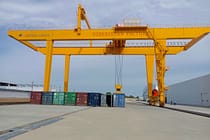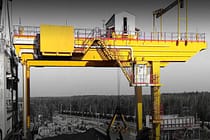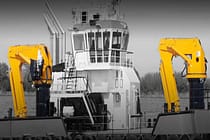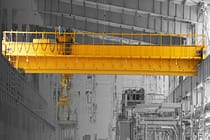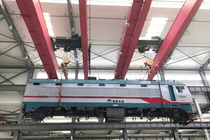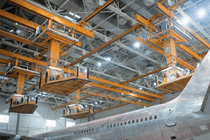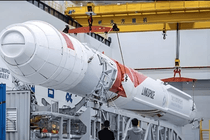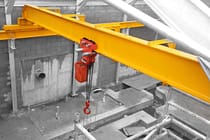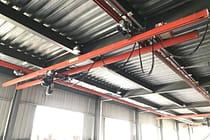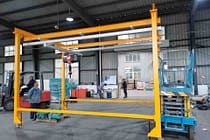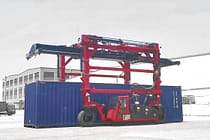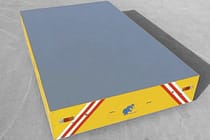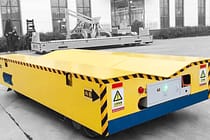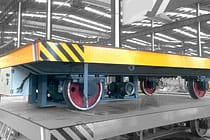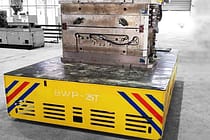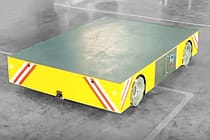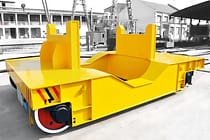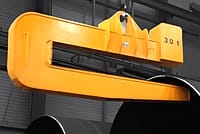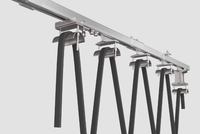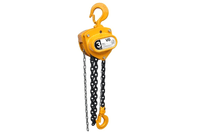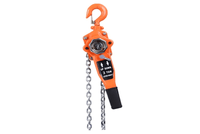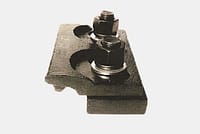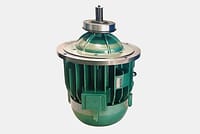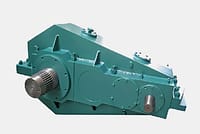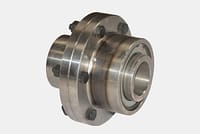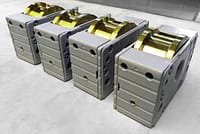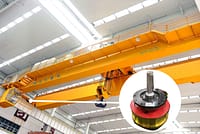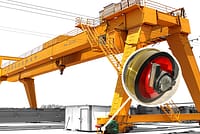What Are The Different Types Of Workshop Overhead Crane?
Overhead cranes are an essential tool for many workshops. They provide a safe, efficient, and cost-effective solution for transporting heavy loads and materials. In this article, we will explore the different types of workshop overhead cranes, their advantages, and disadvantages.
Single Girder Workshop Overhead Crane
The single-girder overhead crane is one of the most common types of bridge cranes used in workshops and factories. This type of crane is designed with a single girder beam that spans the width of the working area. The hoist and trolley mechanism is attached to the bottom flange of the girder, and it moves back and forth along the length of the girder to lift and move heavy objects.

Single Girder Overhead Crane Advantages
One of the major advantages of a single girder overhead crane is its affordability. Single girder cranes are generally less expensive compared to other types of EOT cranes, making them a popular choice for small to mid-sized businesses. They’re also relatively easy to install and maintain, which means that you won’t need to spend a lot of money on maintenance costs over time.
Another advantage of a single girder overhead crane is its versatility. These cranes can be customized to suit a variety of different applications, from lifting small components to moving large machinery. They’re also ideal for workshops with limited space since they don’t require as much headroom as other types of cranes.
Single Girder Overhead Crane Disadvantages
Despite their many advantages, single-girder bridge cranes do have a few disadvantages. One of the main drawbacks is their limited lifting capacity. Since they only have one girder beam, they’re not able to lift as much weight as double girder cranes. This means that if you have heavy equipment or materials that need to be lifted on a regular basis, then a single girder crane might not be the best option for you.
Another potential disadvantage of a single girder overhead crane is its limited span capability. Single girder cranes are typically designed to span up to 65 feet, which means that they may not be suitable for workshops or factories with wider working areas.
Double Girder Workshop Overhead Crane
One popular type of workshop EOT crane is the double girder overhead crane. This type of crane consists of two parallel girders that support a trolley or hoist unit. The trolley moves along the length of the bridge between the two girders, allowing for greater lifting capacity and longer spans than single girder cranes.

Double Girder Overhead Crane Advantages
Double girder bridge cranes have a number of advantages over other types of cranes. For example, they can lift heavier loads than single girder cranes, making them ideal for use in heavy-duty applications. In addition, their longer spans allow them to cover more area than other types of cranes, making them ideal for use in larger workshops or manufacturing facilities. Double girder overhead cranes are also highly adaptable and can be customized to meet the specific needs of a particular application.
Double Girder Overhead Crane Disadvantages
Despite their many advantages, double girder EOT cranes do have some disadvantages. For example, they require more space than other types of cranes due to their longer spans and higher profiles. This can make them less suitable for use in smaller workshops or areas with limited headroom. In addition, they can be more expensive to purchase and install than other types of cranes, which may not be feasible for smaller businesses or those on a tight budget.
Monorail Crane
A monorail crane is a type of overhead crane that has a single beam with a trolley that runs along it. The trolley moves horizontally along the beam, allowing workers to move materials from one area of the workshop to another.
There are two main types of monorail crane: top-running and underhung. Top-running monorail cranes have the beam mounted on top of the support structure, while under-hung monorail cranes have the beam hanging below the support structure.

Monorail Crane Advantages
One of the biggest advantages of monorail cranes is their versatility. They can be used for a wide range of applications, from lifting light loads to heavy machinery. They are a more cost-effective option than some other types of overhead cranes. Due to they only require a single beam,
Another advantage of monorail cranes is their ability to navigate tight spaces. Because the trolley moves along a single beam, it can easily maneuver around obstacles and through narrow aisles.
Monorail Crane Disadvantages
While monorail cranes offer many benefits, there are also some disadvantages to consider. One potential drawback is their limited lifting height. Because the trolley runs along a single beam, it cannot lift materials as high as other types of cranes.
Another disadvantage of monorail cranes is their limited load capacity. While they can handle a wide range of loads, they may not be suitable for extremely heavy loads or those that require precision handling.
Free Standing Workshop Overhead Crane
A free-standing bridge crane is a type of bridge crane that is typically used in workshops, garages, and factories. As the name suggests, it is a freestanding structure that is not attached to the building’s walls or ceiling. Instead, it is supported by a set of pillars or columns that provide stability and support.

Free Standing Overhead Crane Advantages
One of the main advantages of a free-standing bridge crane is that it can be installed in any location within the workshop without the need for additional support structures. This makes it an ideal option for businesses that do not want to make significant modifications to their buildings’ existing structures. Additionally, since the crane is not attached to the building, it can easily be relocated if needed.
Another advantage of a free-standing bridge crane is that it provides excellent coverage and versatility in terms of the workspace it can serve. It can travel along the length of the entire workshop, providing complete coverage for all workstations, so that workers can move products and materials with ease from one end of the workshop to another, increasing efficiency and productivity.
Free Standing Overhead Crane Disadvantages
While there are many advantages to using a free-standing bridge crane, there are also some potential drawbacks to consider. One disadvantage is that the crane takes up valuable floor space within the workshop. Since it requires a set of pillars or columns to support it, this can limit the amount of usable space in the workshop.
Workshop overhead cranes are an essential tool for many businesses, allowing them to lift and transport heavy materials with ease. With various types of workshop overhead cranes available, selecting the right one for your business can be challenging. By understanding the different types of workshop overhead cranes and their applications, you can make an informed decision and choose the right one for your business.
Send Your Inquiry
- Email: sales@hndfcrane.com
- WhatsApp: +86 191 3738 6654
- Telegram: +86 191 3738 6654
- Tel: +86-373-581 8299
- Fax: +86-373-215 7000
- Add: Changnao Industrial District, Xinxiang City, Henan Province, China
 WeChat
WeChat








